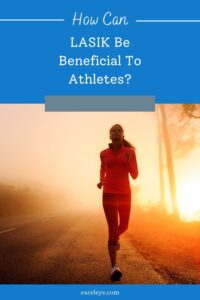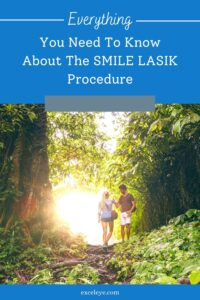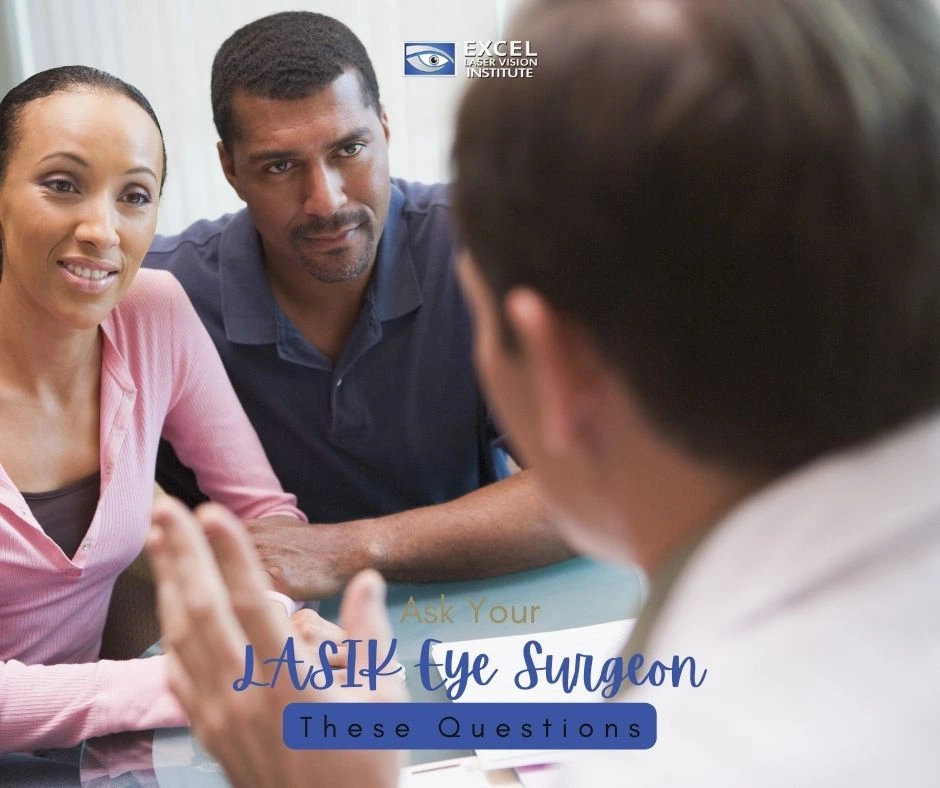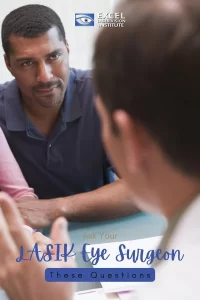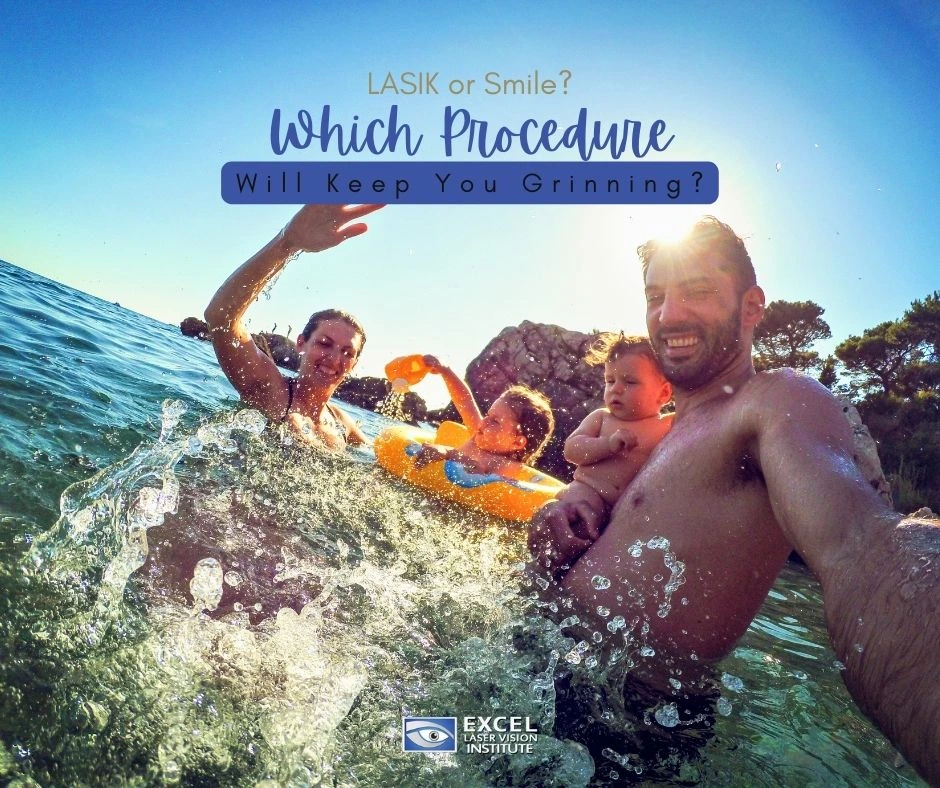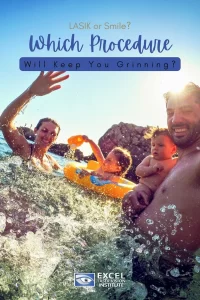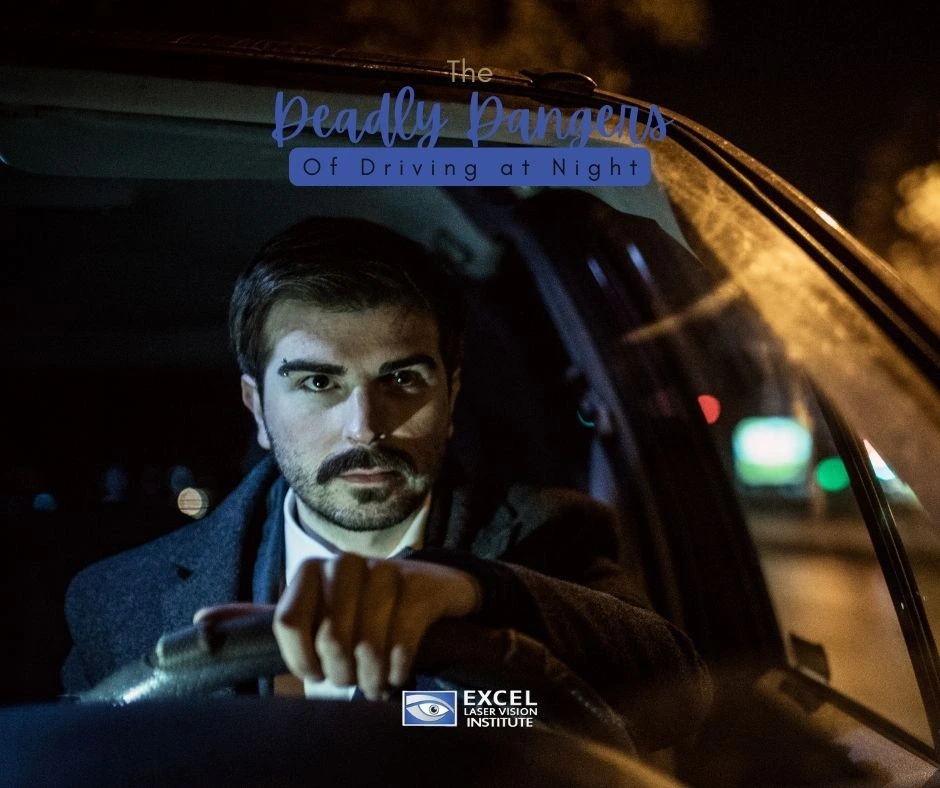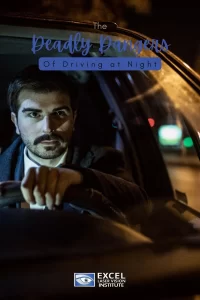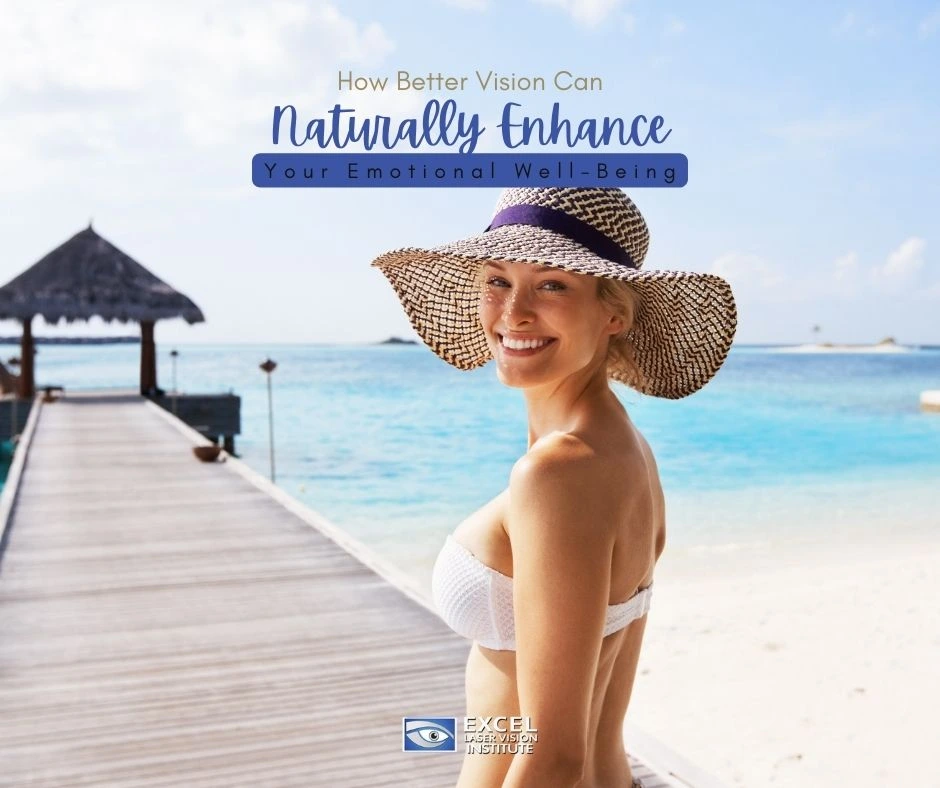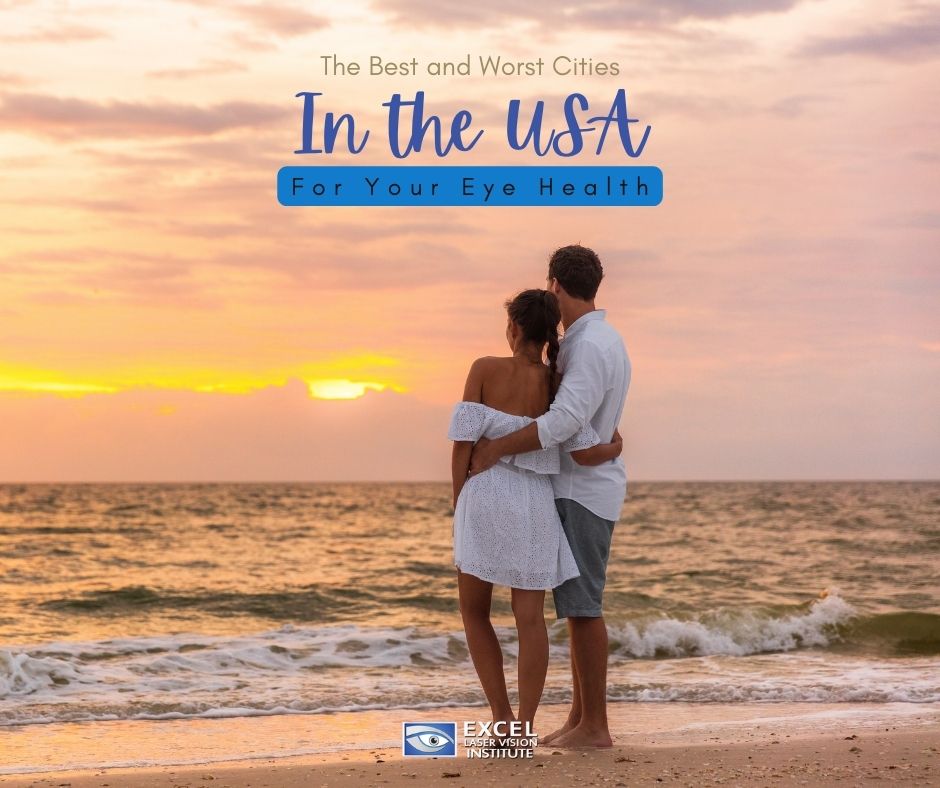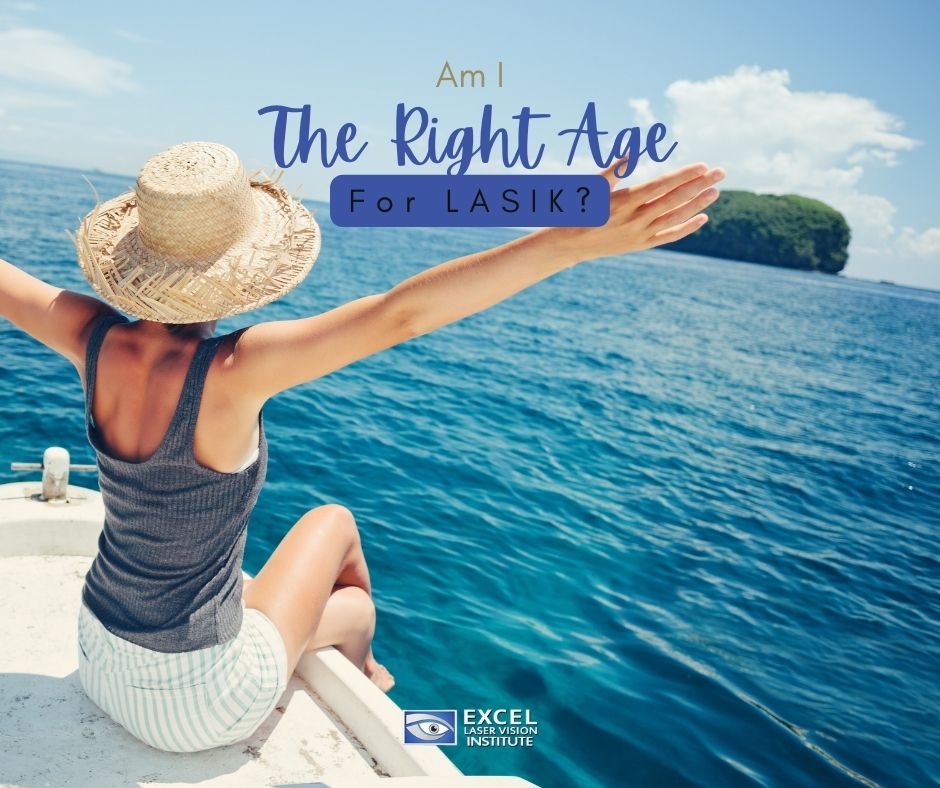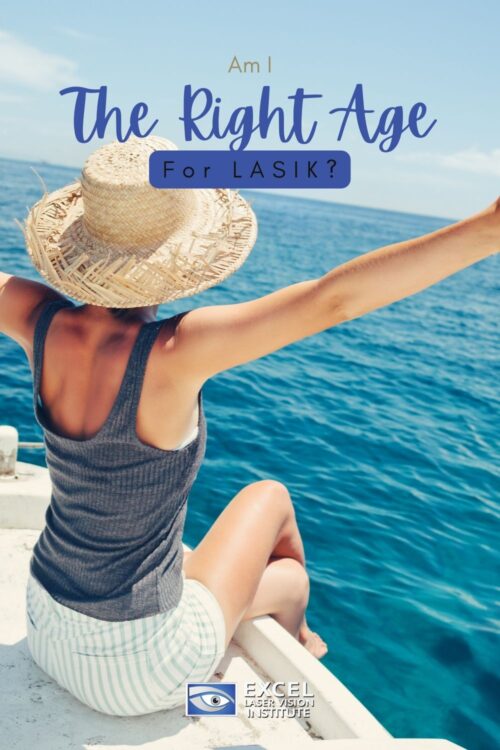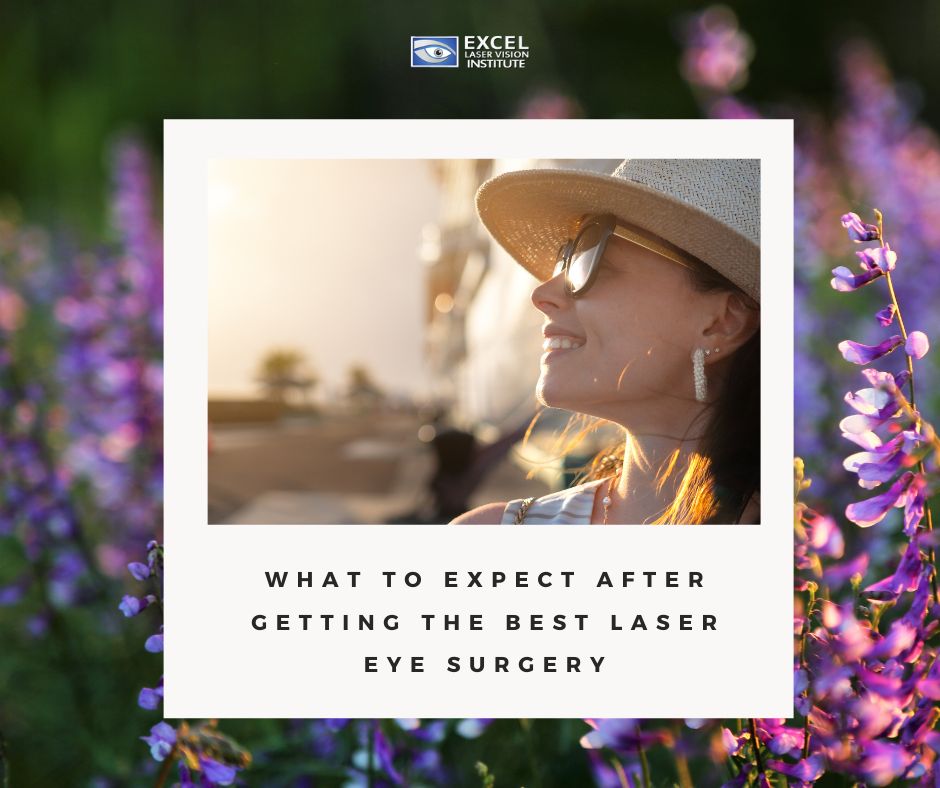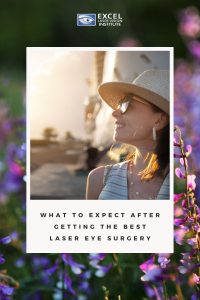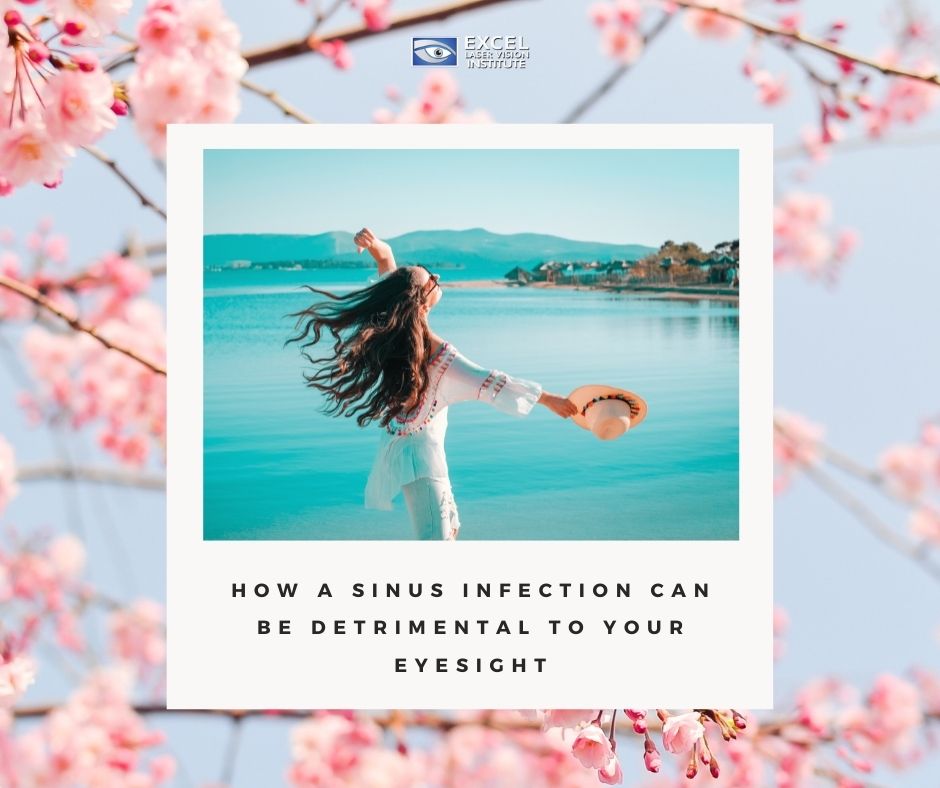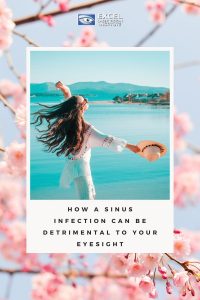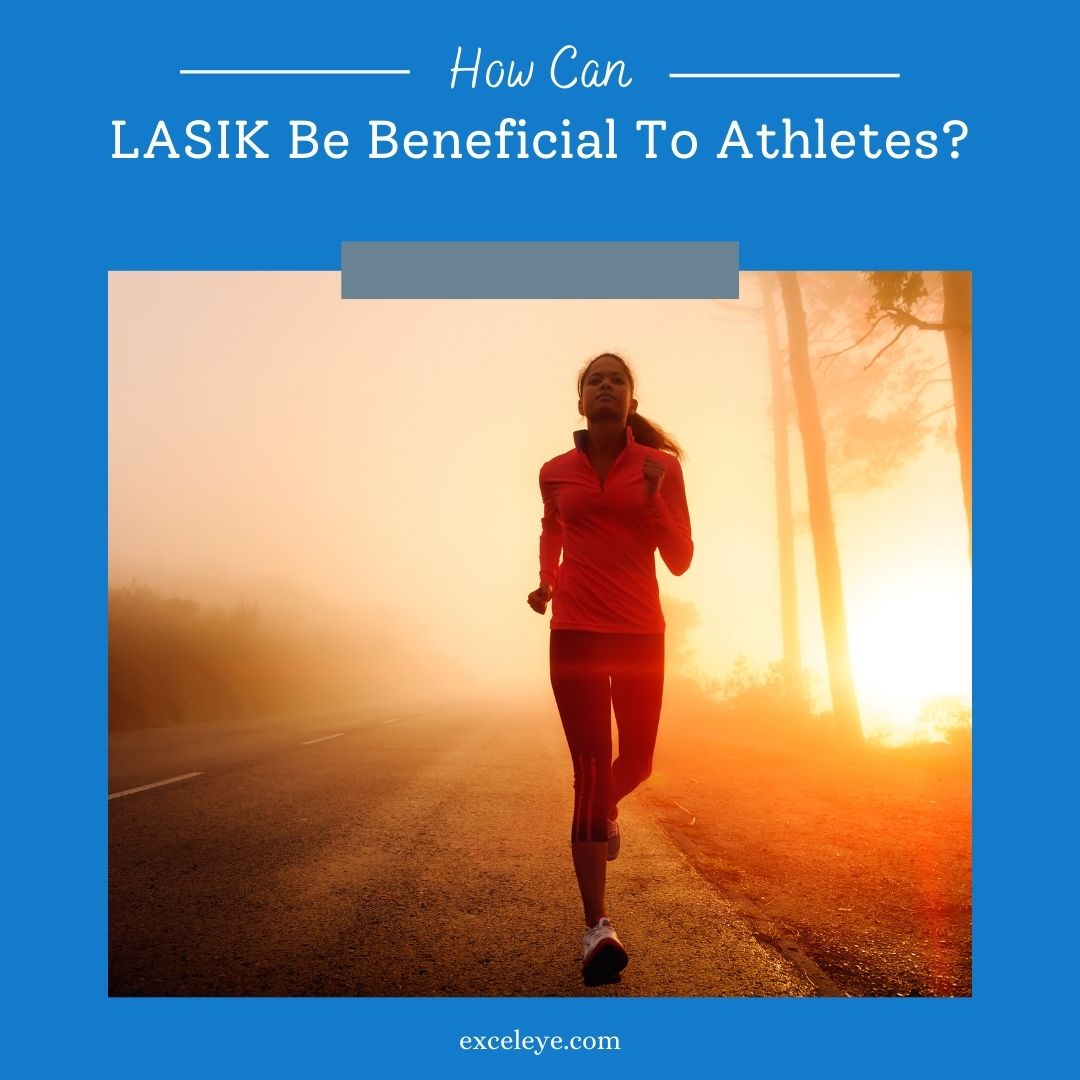
How Can LASIK Be Beneficial to Athletes?
Whether you are a gym rat purely for recreational purposes or a professional athlete, it can be nearly impossible to perform at the optimum level if you suffer from poor vision. Even if you have been wearing glasses or contacts for your entire life, you may feel that it is no longer working out for you and that you need to find a substitute. So how can LASIK in Orange County serve as that alternative you’ve been looking for?
Orange County laser eye surgery is more useful than glasses.
Wearing glasses while jogging or playing a beloved sport like baseball is a massive pain. Plus – you can’t wear glasses if you are a competitive swimmer. Depending on the circumstances, these glasses can also cause fogging and clouding vision. Consider the sport of triathlon. Transition time is valuable, and fussing over changing glasses is not worth it. What if your drinks break or you lose a contact lens during the competition? You’ll simply be out of luck!
Corrective Eye surgery is a more reliable solution.
Your glasses may become displaced or broken during a game or practice if you participate in sports. There is always a risk of infection when wearing contact lenses, especially when swimming, and the risk of trauma and infection is eliminated with
Winter sports
When it comes to winter sports, LASIK has an advantage over glasses. In cold weather, glasses can fog up, impairing performance and safety in winter sports. Water sports are also made more accessible and safer after LASIK, and infection risk is reduced by avoiding contact lenses in the water.
Overall better performance in any sport you enjoy
Glasses, significantly higher prescriptions, do not always provide a realistic vision, and they can cause distortion or magnification changes. The difficulties with bifocals or progressive lenses can be even more remarkable; they require unique gaze positioning, which can be difficult when participating in sports. LASIK improves depth perception and reaction time, critical skills for athletes.
You’ll find yourself recovering and returning to your sport in no time!
Although most people recover quickly after LASIK, each person is unique. Allow extra recovery time after surgery if your recovery takes longer than expected. You can always return to your game sooner if you want to. The recovery time for LASIK is not as long as it is for PRK. As a result, one eye is completed first and then allowed to heal before the second is completed. The spacing of the surgeries on each eye allows for the best possible recovery.
So many famous athletes and celebrities have had tremendous success with LASIK. These big names include but are not limited to LeBron James, Tiger Woods, and Dwayne Wade….and you could be next! Please get in touch with us at (310) 905-8622 to schedule a free Orange County LASIK consultation. Every patient who visits our offices receives the highest level of professional service. Our premiere Orange County laser eye surgeon, Dr. Ferzaad Moosa, is a Harvard-trained physician who is more than qualified to answer any of your questions regarding the process. Whether you wish to find out if you are a good candidate for the surgery or ask about the cost of laser eye surgery, we are confident that choosing us for your LASIK surgery will be one of the best decisions you will make on behalf of your well-being.
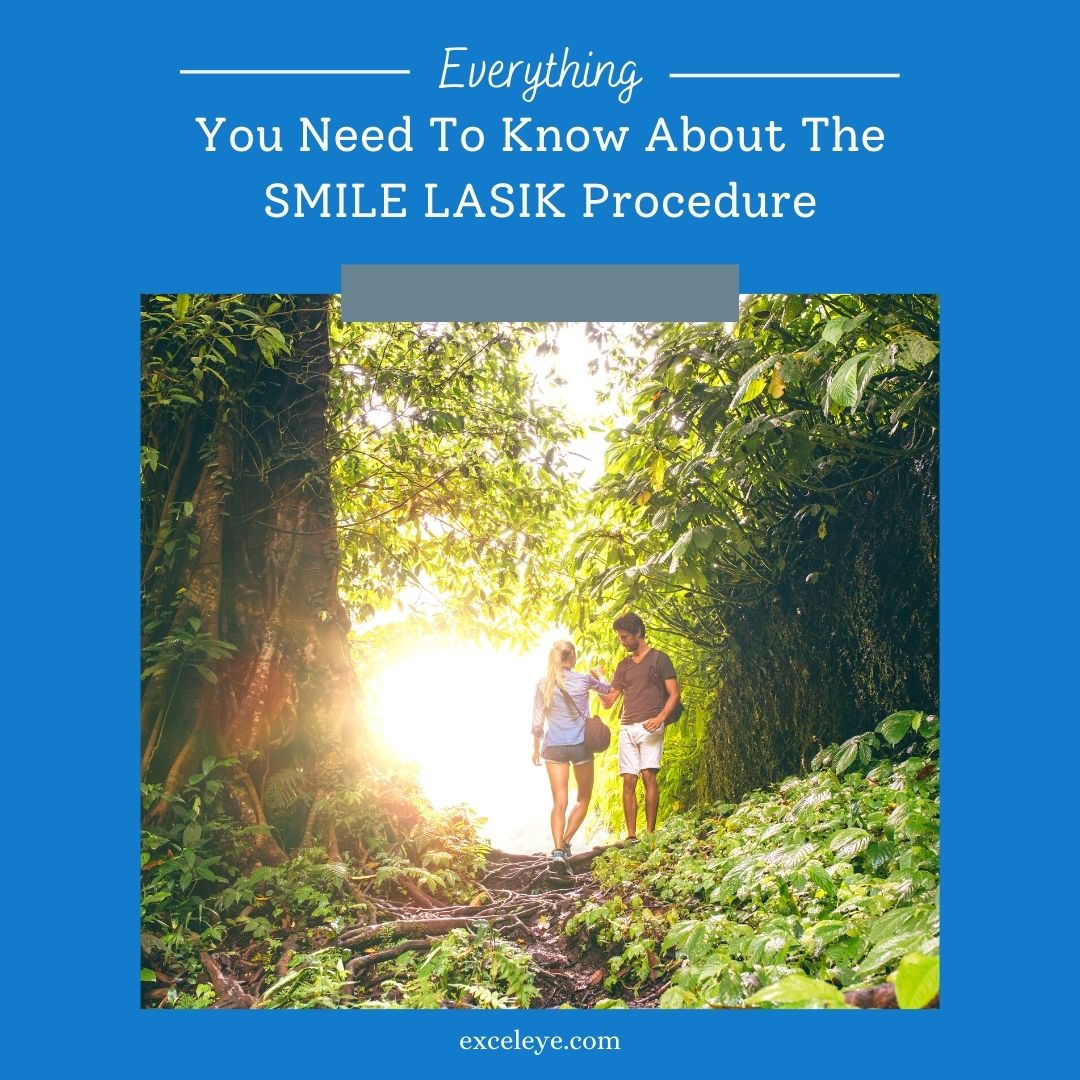
Everything You Need To Know About The SMILE LASIK Procedure
For more than 30 years, LASIK has been used in refractive laser eye surgery in Los Angeles. Additional techniques are also available for better options like the small incision lenticule extraction, also known as SMILE. SMILE is a refractive surgery procedure that offers similar results to advanced LASIK. However, compared to LASIK, this procedure has limited issues. This procedure can be performed using the VisuMax equipment. Learn more about this procedure as shared by experts from the LASIK eye center in Los Angeles.
Procedure
The SMILE procedure is known best for people with dry and irritated eyes. Using this procedure for vision correctness can decrease the disruption on the surface of the eyes, which could bring discomfort to the patient. SMILE gives a more gentle healing process on the ocular surface compared with other procedures. The procedure is also recommended for athletes or sports-oriented people. The SMILE process is not a flap-based procedure which is also an advantage for those who do not want that kind of treatment. This process can be performed using one laser system like the WaveLight EX500 Excimer Laser. The SMILE procedure is a promising treatment for those who want to undergo a vision correction process.
Advantages
In addition to the benefits of SMILE procedure mentioned previously, it is also known that this process utilizes a smaller incision. Approximately 4mm or a smaller incision is made for the procedure. The small incision offers less disruption to the nerves located at the cornea. Disruption of these nerves could lead to denervation, which could cause the dryness of the eye. The effect of this step (i.e., the smaller incision) is more prominent during the early postoperative period, where there is significantly less dryness in the eye observed compared to the LASIK procedure. In addition, there is less possibility of flap complications. Overall, SMILE offers a better way towards the biomechanical stability of the cornea.
Risks
Before choosing an option for vision correction, it is better to determine the risks and benefits offered by the procedure. The risk associated with SMILE procedures includes inflammation, clouded vision, dry eyes, and incomplete tissue removal.
Incomplete Tissue Removal
The SMILE surgery implements the separation and extraction of tissue from the mid-cornea layer. This step is unique to this technique which could add complications to the incomplete removal of tissue. If there is corneal debris left in the performed area, this could lead to abrasion, incisional tears, and adhesions. However, this debris can be flushed out using non-invasive treatments. Debris symptoms are temporary but could affect the recovery period and could lead to complications.
Inflammation
Inflammation is another risk which is a natural consequence for those undergoing an invasive procedure. This risk can affect the healing period, and SMILE has a greater potential for post-op inflammation than LASIK. Patients undergoing SMILE procedure should communicate with experts in LASIK Los Angeles if they have inflammation after the operation.
Hazy Vision
There is also a greater chance of having a hazy vision for those undergoing the SMILE procedure. People who undergo this operation mostly observe blurry vision and light sensitivity. These symptoms are usually observed during the first few months after the surgery.
The last symptom on the list is dry eyes. Dry eyes are common for those undergoing laser surgery. However, compared to other procedures, SMILE patients tend to have less dry eyes than those undergoing LASIK. This is because the SMILE approach creates fewer disruptions in the corneal nerves, which is related to post-op dry eye problems.
Conclusion
The SMILE procedure is a promising option for those who want to undergo LASIK in Los Angeles. This laser eye surgery has its own benefits and risks, which are common for any operation procedure. There are factors to consider when choosing the procedure you want for vision correctness, such as benefits, risks, and LASIK eye surgery cost. It is always important to weigh these factors before undergoing the operation. To further understand and give you enlightenment, it is recommended to always seek professional advice. Experts at the Lasik eye center in Los Angeles can help you choose the appropriate procedure for you.
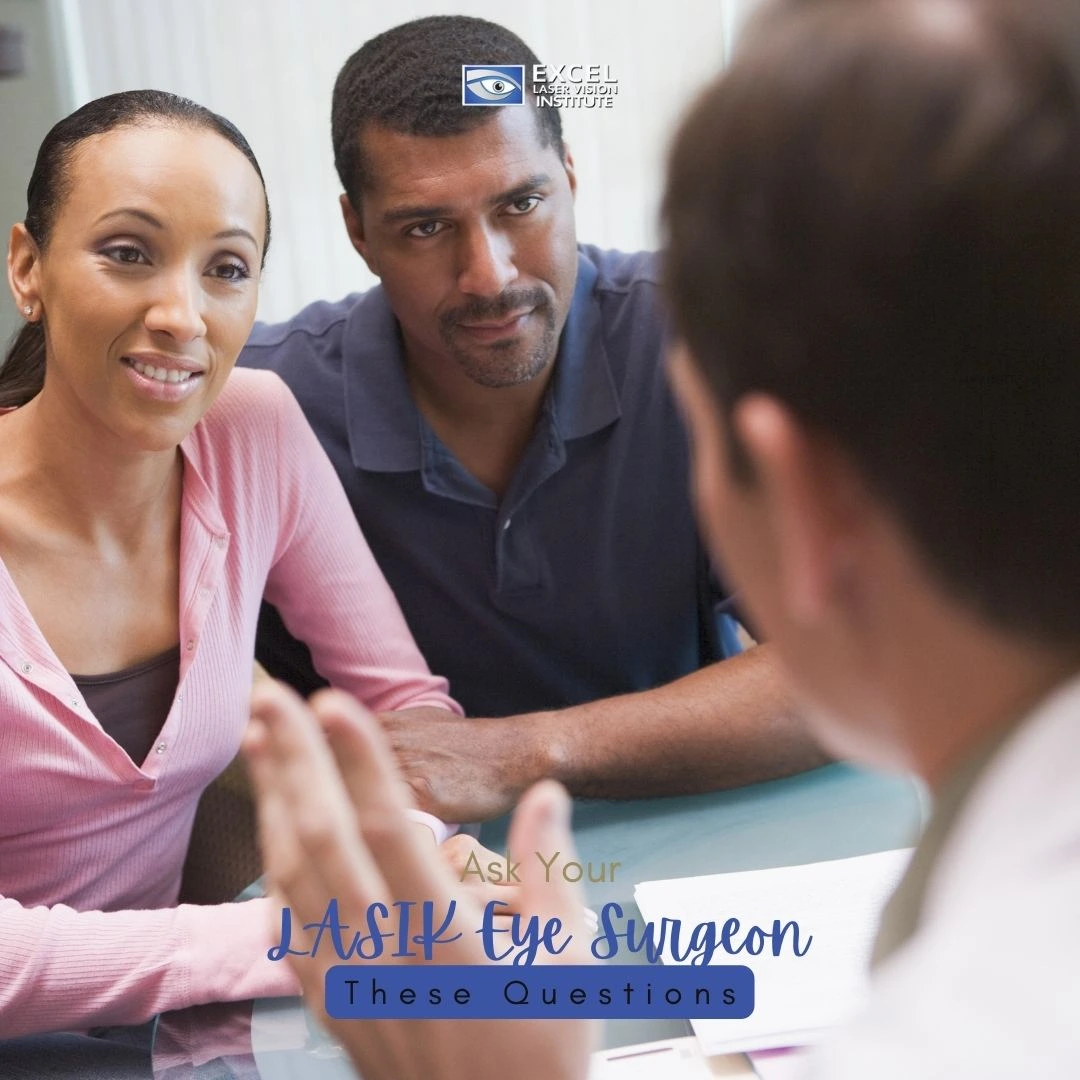
Ask Your LASIK Eye Surgeon These Questions
LASIK surgery is one of the most effective ways to repair refractive defects such as nearsightedness, farsightedness, and astigmatism. Experienced LASIK doctors perform the surgery. Fortunately for you, Orange County LASIK specialists are well-trained and experienced in employing a specialized laser to restructure the lens in the afflicted eye. The procedure is completely safe and effective. The fact that a laser is used can, of course, make some patients anxious. This is why it’s a good idea to talk to a number of before proceeding with the operation so that you won’t walk in on the big day with any surprises. Here are four key questions to ask any Orange County LASIK surgeon during your consultation:
How many LASIK many years of experience do you have?
When it comes to elective surgery, knowing that your surgeon has performed them previously might put your mind at ease. LASIK surgeons, therefore, can easily draw on their experience to assist you in achieving the best possible outcome. Don’t be afraid to ask your surgeon for an estimation of how many LASIK operations he or she has performed since beginning their career.
Are there any medications I should not take prior to undergoing LASIK?
Certain medications can reduce the effectiveness of the sedative used during the surgery. Others may potentially increase the pressure in your eye or make the surgery less effective. Make sure you tell your LASIK surgeon about any medications you’re taking, both over-the-counter and prescription. Your doctor can help you figure out which medications you should stop taking at least one week prior to your surgery.
Where will the operation be conducted?
LASIK surgeons will frequently perform the treatment wherever their equipment is located, and it may not be in the same location as your consultation. You must inquire specifically about the procedure’s location, as it may be performed somewhere other than your surgeon’s clinic. It’s a good idea to visit the eye center where your LASIK surgery will be performed at least a few days before the procedure.
What should I expect from the outcome of the procedure?
You should have realistic expectations going into your surgery. A good LASIK surgeon will be forthright with you regarding the procedure’s outcomes. Although Orange County laser eye surgery is used to address a broad spectrum of refractive problems, the severity of the error might affect the procedure’s results. Your surgeon may need to repeat the treatment several years later if you have a substantial refractive error.
Finding the Best Lasik Surgeon in Orange County
Dr. Ferzaad Moosa, our veteran surgeon at Excel Laser Vision Institute, is a Harvard, USC, and UCLA-trained refractive specialist and board-certified ophthalmologist with experience and skill doing LASIK operations. Dr. Moosa can undoubtedly answer your questions regarding laser eye surgery cost and beyond in order to give you the solutions you require if you are looking for an Orange County LASIK surgeon to entrust your eye care needs. Please make an appointment with our highly qualified surgeon for a free consultation today!
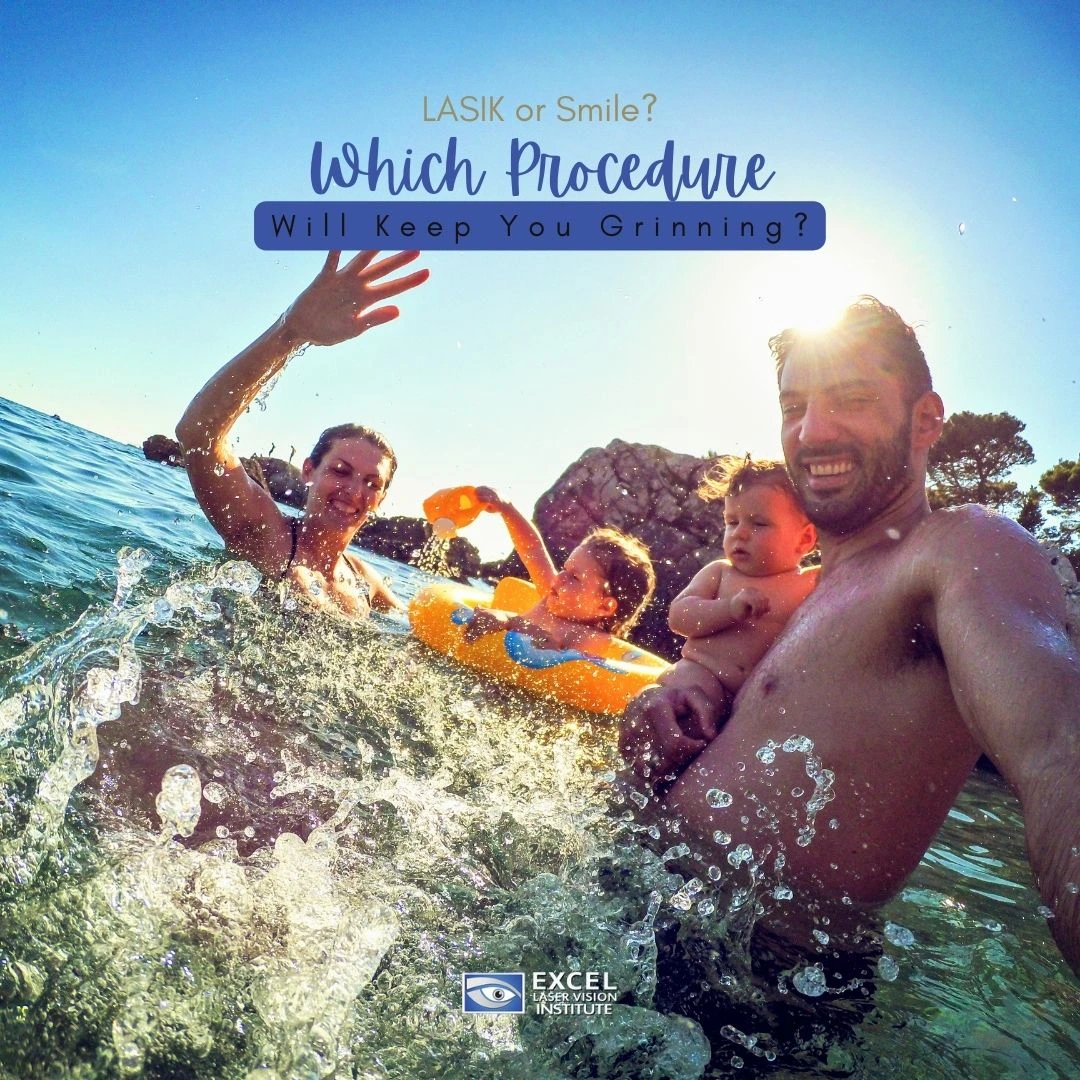
LASIK or Smile? Which Procedure Will Keep You Grinning?
If you, like millions of others, suffer from nearsightedness, you may be contemplating whether you should undergo SMILE or Los Angeles LASIK eye surgery. While each of these procedures deals with refractive problems, the methods used to treat them differ slightly. You can contact a highly reputable Los Angeles LASIK eye center such as Excel Eye to see if you are eligible for either of these procedures. LASIK is a popular vision repair surgery that has received high praise from doctors and patients. While SMILE is a newcomer to the industry, it quickly establishes itself as a formidable opponent. In September 2016, the FDA approved SMILE for use in the United States, and the surgery has produced such positive results that the SMILE Relex vs. LASIK controversy has erupted.
Here is what you should know:
What Exactly is SMILE Laser Surgery?
Small Incision Lenticule Extraction (SMILE) is an acronym for small incision lenticule extraction. A VisuMax femtosecond laser is used to conduct the surgery. The surgeon uses a femtosecond laser to generate a small, lens-shaped piece of tissue called a lenticular within the cornea during a SMILE operation. Following that, a small arc-shaped incision is produced on the cornea’s surface with the same laser, and the surgeon extracts and disposes of the lenticular through this incision.
When the little lenticule is removed, the shape of the cornea changes, correcting nearsightedness, according to a Los Angeles laser eye surgery specialist. The corneal incision heals without stitches in a few days, and more precise vision appears almost immediately. Nearsightedness can correct nearsightedness of up to -10.00 diopters (D) with SMILE laser eye surgery candidates must be at least 22 years old, have no more than -0.50 D of astigmatism, and have had their eyeglass prescription stable for at least 12 months to be eligible for SMILE eye laser surgery.
Who is a Good Candidate for LASIK?
A patient’s corneal thickness must be sufficient for your eye surgeon to consider you a good candidate for LASIK. The reason for this is that during your procedure, a flap is formed. As a result, a particular corneal thickness is required, and LASIK eye surgery is not accessible to individuals with thin or uneven corneas. Patients with thin or uneven corneas are usually better candidates for SMILE or PRK. SMILE may be preferable if a patient is prone to prolonged dry eye issues. LASIK increases a patient’s previously chronic dry eye problem by increasing the risk of postoperative dry eye symptoms.
Pros of SMILE
According to studies, SMILE produces about the same visual acuity as LASIK for the treatment of nearsightedness without requiring a LASIK-style corneal flap to be created by the surgeon. Except for one participant, all 328 who underwent the SMILE treatment had uncorrected visual acuity (UCVA) of 20/40 or better following surgery, and 88% had UCVA of 20/20 or higher. Furthermore, compared to LASIK, there is evidence that SMILE has a lower incidence of dry eye issues. There could be several reasons for this, including that SMILE is performed within the cornea without a huge corneal flap, affecting fewer corneal nerves.
The small SMILE incision may also help the cornea have better biomechanical stability after SMILE, as opposed to its ability to preserve its form after LASIK, especially the following damage. Finally, if you have a significant degree of nearsightedness, you may need enhancement surgery after LASIK to achieve the clarity of vision you desire without glasses. Because there is less dryness of the cornea during the SMILE treatment, there appears to be a lower likelihood of requiring another procedure after SMILE for correction.
Does SMILE Have Any Downsides Compared to LASIK?
SMILE has many advantages, but it does have one disadvantage: it cannot be used to correct farsightedness or astigmatism at this time. As a result, SMILE is for you if you have nearsightedness and your eye surgeon believes it is the best option for you. Plus, unlike LASIK, visual recovery takes a little longer. A patient can have immediate vision recovery after a Los Angeles LASIK treatment; however, SMILE’s visual recovery can take one to two days.
If you want to learn more about SMILE vs. LASIK or your nearsightedness, including the specifics of the procedure or the cost of LASIK eye surgery, please get in touch with our Encino or our Brea office today.
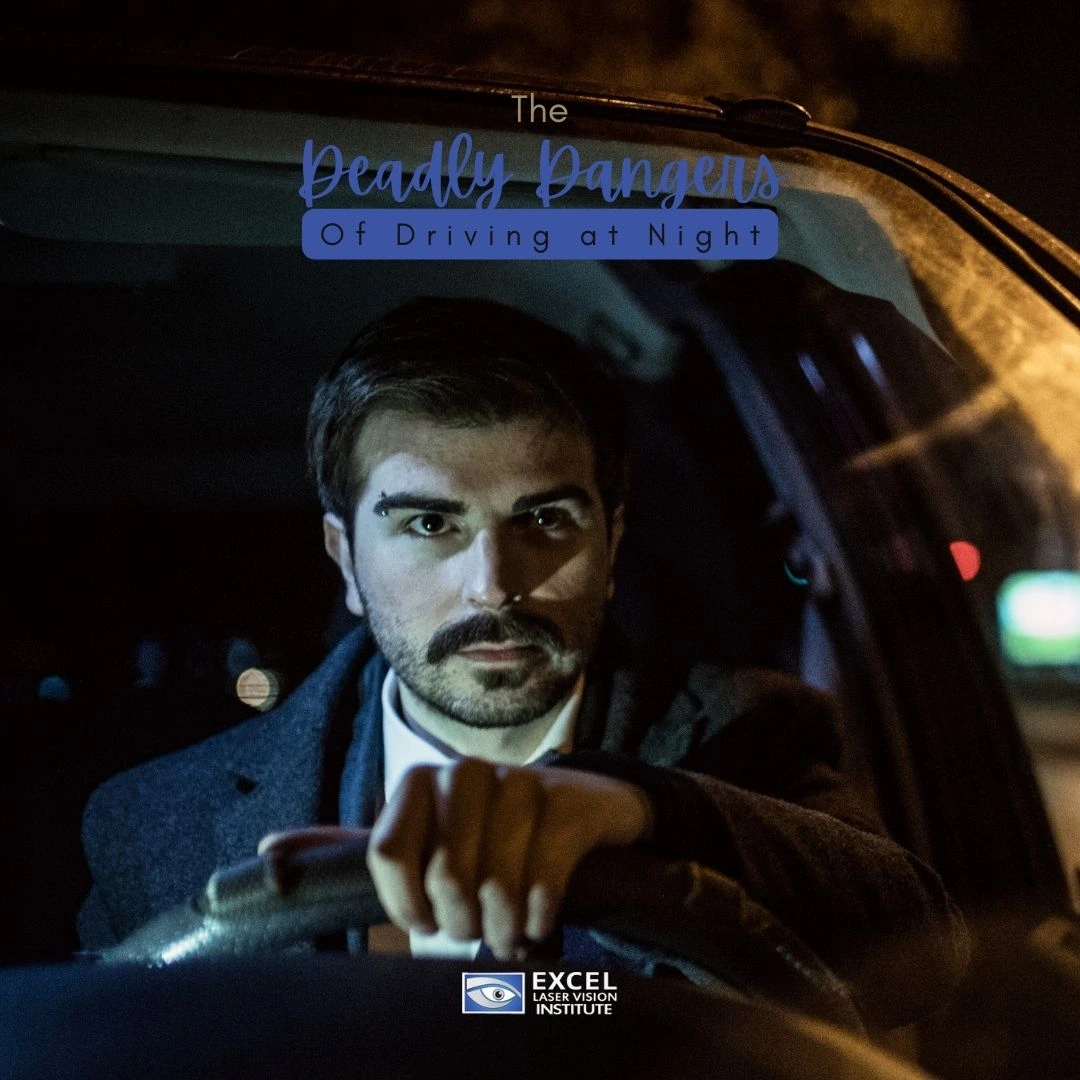
The Deadly Dangers of Driving at Night
Did you know that most car accidents in the United States happen in the dead of night? In fact, according to the National Safety Council, 50% of fatal car accidents happen at night even though humans only spend a quarter of their lives driving at that time.
Below are the main reasons why driving at night is so dangerous.
You See Less at Night
Unless you’re a cat with enhanced vision in the dark, it’s extremely difficult to see things at night, even with perfect vision. Your headlights can only illuminate things to a certain extent—you’re still bound to miss certain road features like curves, potholes, sidewalks, and other things that can potentially harm you and your car.
Even worse, it’s a lot harder to see animals and people. How many horror stories have you heard about deer or moose suddenly appearing out of nowhere while you were driving at night? Not only can driving at night be dangerous to you, but it can also be dangerous for others—it’s a lose-lose situation for everybody.
You Have a Slower Reaction Time
Because your eyes see less at night, your body has less time to react to certain things. This is especially grimmer because people tend to drive faster at night—with less traffic around, people feel more confident about speeding.
This combination of slower reaction time and higher speed can be fatal. According to a study done by the National Highway Traffic Safety Administration, car accidents caused by speeding occur twice as much at night than during the day.
You’re Prone to Light-Related Issues
If you think that more light when night driving is a good thing, then think again! Light-related issues like glares, halos, and blurred vision can negatively impact your vision at night. It’s the same kind of pain and discomfort you feel when someone turns the lights on you while you’re sleeping—your eyes have a hard time adjusting to sudden, bright lights, and that can make all the difference between life and death.
You’re Sleepier at Night
If you’re driving late at night, chances are you’re lacking sleep. Being sleepy makes you less aware of your surroundings, making you more prone to accidents or poor driving decisions, or worse, falling asleep behind the wheel!
How to Practice Safe Driving at Night
Now that you’re aware of the risks of night driving, it’s time to learn how to mitigate them. Below are several effective ways to improve your safety when driving at night.
Avoid Driving at Night
The best way to avoid accidents caused by driving at night is, of course, to avoid driving at night altogether. As much as possible, you should squeeze in all of your outdoor activities in the daytime so you can be home safe and sound before the sun sets.
If you’re someone who can’t avoid driving at night due to things like night shifts or emergencies, then just make sure to take extra precautions. Reduce your driving speed. Drive in well-lit areas. Have a friend to keep you company so you won’t be tempted to fall asleep. All of these will up your safety considerably.
Keep Everything Clean
You’ve already got low visibility due to lack of light—don’t make it even lower with dirty cars!
Keep everything nice and squeaky clean, including your windshield, side mirrors, side windows, and rearview mirror. This way, you can readily see things whenever you need to. Remember to clean the inside part of your windows, too; many people forget that it gets just as dirty as the outside!
Also, keep your eyeglasses just as clean. Or better yet, invest in laser eye surgery costs so you’ll never have to worry about eyeglasses or contact lenses ever again.
Be Well-Rested
If you plan on driving at night, make sure you have a few hours of sleep beforehand at the very least, and never drive if you’ve been awake for more than 16 hours. If you find yourself yawning or struggling to keep your eyes open, then pull over for a nap or find the nearest accommodation as soon as possible and continue driving in the morning.
Sleep is an absolute must if you want to keep your mind alert on your journey.
Schedule Eye Exams with Your Doctor
Keep your eyes and eyesight in tip-top shape by making regular visits to your eye doctor. They’ll be able to assess any issues with your eyes, like astigmatism or cataracts that can affect your driving at night. They can also prescribe you medications and/or corrective measures to fix it.
Don’t forget to ask your doctor about anti-glare lenses, polarized glasses, or LASIK in Los Angeles!
Conclusion
There is no excuse for poor driving behavior and etiquette when driving at night. Not only are you a danger to yourself, but you’re also a danger to other people! Keep you and your loved ones safe at all times by driving extra carefully, keeping your car clean and fully functional, and being healthy (i.e., having your vision checked regularly and never driving with alcohol or drugs in your system).
If you’re a frequent night driver and are interested in learning more about improving your vision for driving at night, then might we recommend visiting your nearest Los Angeles LASIK surgeon, Dr. Ferzaad Moosa? He is an experienced surgeon with more than two decades of service under his belt. Schedule a free consultation with him today at (310) 905-8622 to see if LASIK can help keep you safer not only at night but the whole day!
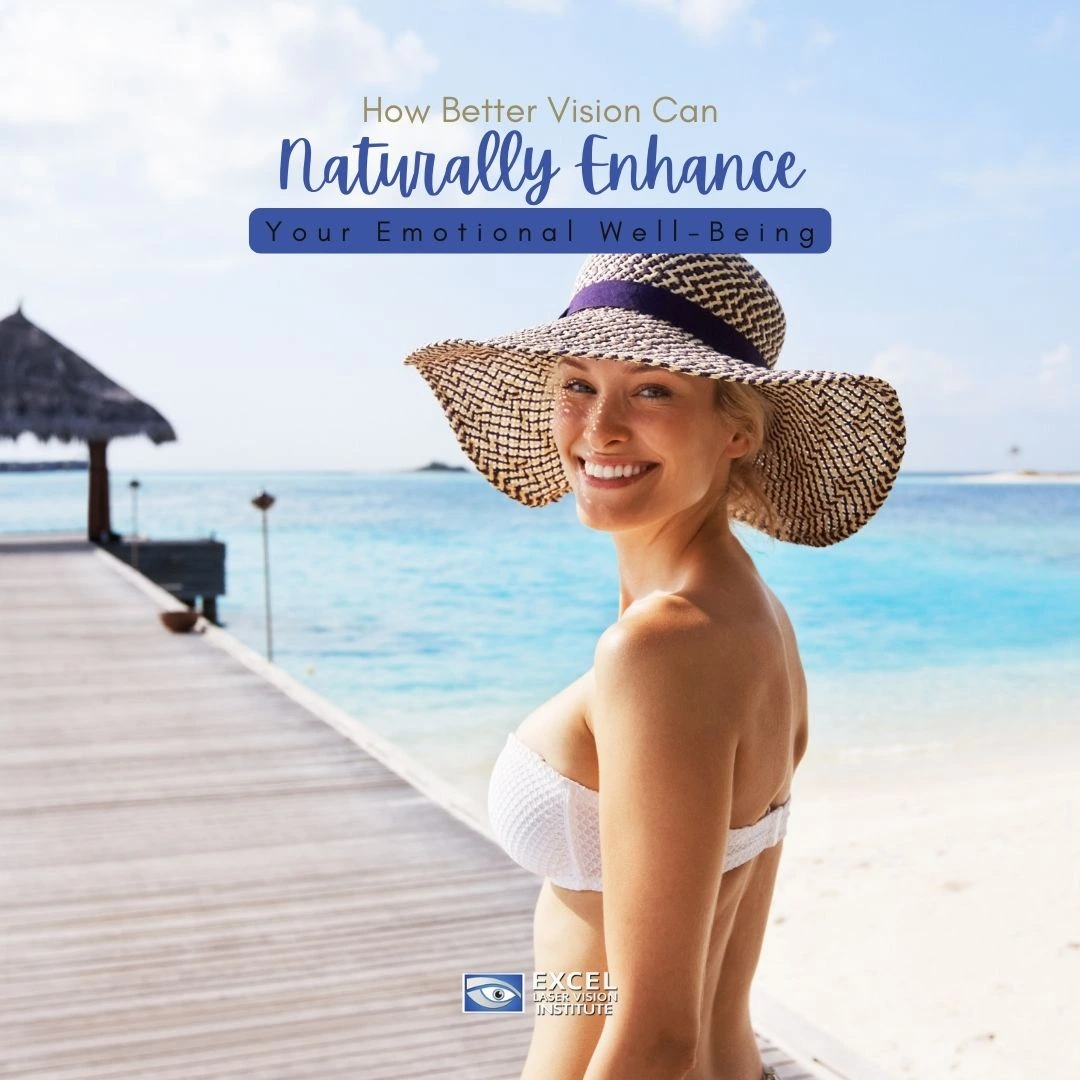
How Better Vision Can Naturally Enhance Your Emotional Well-Being
Many people consider LASIK in Orange County to be a viable, long-term solution to eyesight problems. While this is largely true, you might be stunned to discover that strengthening one’s vision can considerably enhance one’s mood and alleviate symptoms of hopelessness and depression. So what does the research say about this topic?
Depression and Eyesight
It’s natural for our vision to deteriorate as we get older. However, sometimes people face considerably faster vision loss than what is considered typical. According to research, this has a strong link to the risk of developing depression and other mood disorders. Consider the following statistics:
- Adults with poor eyesight are 30% more likely to be depressed than those who have good vision.
- More than 10% of people who have eye issues also have serious depression symptoms.
- When compared to persons without impaired vision, those with poor eyesight (11.3 percent) were more likely to be depressed (4.8 percent).
On an even lower note, the data also reveals that those with vision problems are more likely to be depressed than people who are completely blind. Eyesight is one of our most important senses, and even little abnormalities can cause substantial emotional disorders. These problems can significantly limit what you can do on a day-to-day, including:
Ways In Which Vision Affects Our Emotional Well-Being
Driving
Naturally, it’s difficult to complete normal activities and meet goals when you can’t drive securely at night or even during the day! This can make you truly feel helpless not being able to get yourself where you need to go. Not to mention Lyfts can take forever to get to your house!
Difficulty recognizing others
The inability to recognize friends and loved ones has a far greater impact than most may imagine. According to a recent study, being unable to recognize faces leads to decreased social engagement, reduced confidence, and higher rates of anxiety, despair, and loneliness.
Recreational activities
People with unstable eyesight are often not able to fully enjoy some of their favorite hobbies during their free time, such as playing sports, reading, gaming, or even spending time with their friends and family.
Less satisfactory work performance
Poor vision directly impacts your career. Employees with vision problems are more likely to take sick days, be looked over for promotions, and have lower productivity and job satisfaction, according to studies.
Physical health complications
Poor vision can lead to migraines, nausea, and other health problems. Wearing eyeglasses or contact lenses, contrary to popular belief, might exacerbate this effect, particularly when prescription difficulties emerge.
How Laser Eye Surgery Can Help You
While wearing prescription eyeglasses and contact lenses can help with worsening eyesight in the short term, it’s worth speaking with a Orange County LASIK surgeon to learn about more effective choices. LASIK surgery is a revolutionary method that can help people regain their vision. It has an incredibly high success rate, and further complications are uncommon proceeding the treatment. The long-term benefits of laser eye surgery can help ease depression symptoms and improve quality of life.
Don’t hesitate to contact the Excel Laser Vision Institute if you think LASIK in Orange County is right for you. Our eye physicians can help you make an informed selection and assist with the cost of LASIK eye surgery. To learn more, please contact us.

The Best and Worst Cities in the USA for Your Eye Health
Many people don’t consider the environment they live in a factor in their eye health. They don’t realize that external things like weather and living costs can contribute to all sorts of vision impairment problems, even if they practice good habits and hygiene with their eyes.
So, using a combination of factors such as altitude, humidity, temperature, pollution, etc., we’ve compiled a list of the best and worst cities to live in for your eye health.
The Best Cities in the USA for Eye Health
According to an expert LASIK surgeon in Orange County, the following ten cities are the best in the United States for your eye health. Notably, almost all of these are located either in the Pacific Northwest or the Southeast.
- Tacoma, Washington
- Sarasota-Bradenton, Florida
- Charleston, South Carolina
- Mobile, Alabama
- Portland-Vancouver, Oregon and Washington
- Orange County, California
- Honolulu, Hawaii
- Jacksonville, Florida
- New Orleans, Louisiana
- Seattle-Bellevue-Everett, Washington
The cities were chosen based on several factors. We’ll be explaining more about them below.
Altitude
Low altitude cities like Tacoma and Sarasota have an abundance of oxygen in the air. This is important because your eyes (particularly the cornea) lack blood vessels, which means they can’t get oxygen-rich blood from the heart. Our eyes had evolved to get oxygen from our environment instead to keep them nice and moist, preventing them from drying out. This is also why eye doctors recommend you take out contacts a few hours a day—your eyes need exposure to oxygen!
Sun Exposure
Rainy or cloudy days may seem gloomy, but you’d never catch your eyes shedding a tear over it. That’s because too much exposure to UV rays from the sun can cause a variety of diseases like cataracts, eye cancer, and eye growths!
There ain’t much sunshine in Portland or Seattle, but at least you’re protected from the sun’s harmful UV rays!
Humidity
As a provider of laser eye surgery in Orange County, we know how much of a pain in the butt humidity can be. Not only do we have to deal with extremely hot summers, but we also have to deal with being perpetually sweaty and sticky!
Nonetheless, there is a hidden benefit to high humidity. Cities like Orange County and Honolulu are good for eye health because they promote tear production and help our eyes retain moisture. You’re less likely to pull out the eye drops in these cities!
Pollution
While they may seem harmless, pollutants in the air have adverse short-term and long-term effects on your eyes. That’s why people living in cities with low pollution such as Jacksonville and Tacoma generally have healthier eyes—with less dust, dirt, and other irritants floating around in the air, their eyes are clean, moist, and healthy.
Computer Usage
People get distracted way too easily on the computer. Before long, their eyes are dry and tired after spending hours scrolling through Facebook or watching random videos on YouTube!
If you live in New Orleans or Mobile, you probably don’t spend as much time on your mobile phone or computer. We don’t know exactly why that is, but we’re not complaining!
Commute Time
The longer you’re out and about in the city, the longer you’re exposed to pollutants, sun exposure, and other things that can irritate the eye. Unsurprisingly, commute time is a huge factor in eye health given how many people have to commute every day for work or school.
Commuters in smaller cities like Charleston and Sarasota have a shorter commute time.
The Most Eye Health-Conscious Cities in the USA
While the previous section had a list of cities that were healthy for the eyes, this section has a list of cities that prioritize their eye health. Compiled by VSP Vision, the largest non-profit eye health provider in the country, residents in this city are the likeliest to visit their eye doctors for annual check-ups or vision problems.
- Reno, Nevada
- Boise, Idaho
- Oklahoma City, Oklahoma
- Des Moines, Iowa
- Raleigh, North Carolina
- Redding, California
- Colorado Springs, Colorado
- Fayetteville, Arkansas
- Denver, Colorado
- Tulsa, Oklahoma
“An annual eye exam should be a part of everyone’s overall healthcare routine, not only to keep their vision healthy, but also to leverage its proven preventative health benefits,” says VSP Vision President, Kate Renwick-Espinosa. “Your eye doctor is often the first to spot signs of chronic conditions including diabetes, high blood pressure, and high cholesterol. It’s critical that you visit your eye doctor annually to ensure the health of your eyes as well as your wellness overall.”
Looks like the rest of the United States could take a page out of their books!
Another interesting tidbit they found was that women were more likely to visit the eye doctor than men in all cities, both good and bad. 58% of their total respondents were women. Why men are less likely to go for a check-up is another topic entirely, and you could read more about the fascinating psychology behind it here.
The Worst Cities in the USA for Eye Health
On the other side of the spectrum, the following ten cities are the least favorable places to live in for your eye health. If you want to keep your eyes safe and protected, then you need to take extra care and precaution. Otherwise, you’ll have to start saving up for laser eye surgery costs!
- Denver, Colorado
- Albuquerque, New Mexico
- Salt Lake City-Ogden, Utah
- Wichita, Kansas
- Las Vegas, Nevada
- Kansas City, Missouri
- El Paso, Texas
- Chicago, Illinois
- Phoenix-Mesa, Arizona
- Tulsa, Oklahoma
As you can see, the cities are a bit more spread out than in the previous list.
Altitude
High altitude cities like Denver and Salt Lake City have less oxygen in the air, and the weather can get very cold and biting during the wintertime. This combination can be aggravating on your eyes that have to work double-time to keep everything warm and moist!
When it gets snowy and icy in these cities, there’s another worrying condition you need to worry about—snow blindness. This happens when harmful UV rays from the sun are reflected on the ice and into your eyes. It can cause blurry vision, irritation, sensitivity, and even vision loss.
Protective gear like sunglasses isn’t just for summer—they’re also a must for winter.
Sun Exposure
Sunshine might be associated with happiness and joy, but it can get pretty dangerous for the eyes. Too much exposure to sunlight can permanently damage the surface of your eye before you even realize it! As we mentioned earlier, you can develop conditions like cataracts and eye growths easily if you aren’t careful enough.
Always wear sunglasses when walking around Las Vegas or Kansas City!
Humidity
All specialists in LASIK in Orange County would probably agree that low humidity has more disadvantages than high humidity. Not only does it dry out the eyes, but it also dries out the skin (e.g., hands, lips), sinuses, and hair.
Additionally, research has shown that low humidity increases the spread of viruses and bacteria. With less moisture in the air, airborne particles can easily travel around. Our hair-like projections in the nose and lungs called cilia also function less in low humidity, making it harder for them to protect us. This makes us especially vulnerable to viral eye diseases like conjunctivitis.
It would be good to have a humidifier if you live in cities like Mesa and Albuquerque.
Pollution
Larger cities like El Paso and Chicago typically have tons of pollutants coming from car and truck exhausts, factories, construction and demolitions, and more. This makes their residents susceptible to irritation because of all the particles rubbing against their eyes.
Life in the city may not be fun, but be prepared for the onslaught of pollutants!
Wind
If you live in windy cities with air pollution, the last thing you want to do is have the wind blow pollutants and irritants right into your eyes. Tulsa and Wichita ranked high only on this list because a good breeze is enough to have your eyes reddening and stinging.
Computer Usage
Computer vision syndrome (also known as digital eye strain) is a set of conditions caused by excessive screen time on devices. Due to things like extensive computer usage, poor lighting, high glare from screens, poor seating posture, improper viewing distances, and others, people eventually develop eyestrain, headaches, blurred vision, dry eyes, and more.
In major cities like Denver and Chicago where everything is well-connected on the Internet, computer vision syndrome is a major problem. Even worse, it’s not talked about as much because computer usage only boomed in the last decade or so. However, we can assure you that digital eye strain is very much a real thing and something to think about the next time you’re on your computer.
Commute Time
As we mentioned earlier, a longer commute time means longer exposure to the elements. Chicago has one of the longest commute times in the country, along with New York City, Washington D.C., and San Francisco. Additionally, many of the country’s public transportation systems are a haven for pollutants and bacteria, which only makes things worse for your eyes.
The Least Eye Health-Conscious Cities in the USA
If you’re contemplating getting laser eye surgery in Orange County, you’d already be faring a lot better than people living in these cities. According to VSP Vision’s report, people living in these areas are the least likely in the country to visit their eye doctors.
- Cleveland, Ohio
- Bakersfield, California
- Merced, California
- Akron, Ohio
- Albuquerque, New Mexico
- Detroit, Michigan
- Stockton, California
- Santa Rosa, California
- Bridgeport, Connecticut
- Salinas, California
Now, there are plenty of possible reasons why people won’t visit their eye doctors, but probably the most prevalent of them is the expensive cost or lack of coverage in their medical insurance. Indeed, if you take a look at the list, you’ll see that Californian cities comprise half of it. That’s not surprising considering that California is the third-most-expensive state in the country to live in!
Another reason why people don’t go is that they feel like they don’t have to. According to a CDC report done in 2011, many think visual impairments are quite common and are a natural part of the aging process. Thus, they miss out on treating preventable eye diseases early on in their lives and start paying for it twofold as they get older.
Whatever their reasons are, it’s super important to not follow their lead. Not only does taking care of your eye health prevent vision-related problems like glaucoma and cataracts, but it also stays on top of other diseases like diabetes and high blood pressure that can quickly become life-threatening.
Luckily, the state of health insurance has relatively improved since the CDC published its report in 2011. Many insurance companies have started offering eye care as part of their coverage, so annual check-ups to your eye doctor should not be as expensive and inaccesible anymore. Please make sure your insurance provider covers eye care. Some examples include Aetna, Opticare, and United Health Care.
Additionally, many eye clinics have special financing options so you can pay off your procedures without breaking the wallet. At Excel Laser Vision Institute, for example, which is a trusted provider of LASIK in Orange County, we offer CareCredit and Vision Fee Plan that features a 3, 6, or 12-month no-interest payment plan and other extended payment options. Perfect eyesight will never be out of reach for us as we firmly believe this is something everybody deserves.
Always remember that not being conscious of your eye health will cost you not only money but also your vision.
Conclusion
This article is not meant to hype up or bring down certain cities. We know that not everybody has the privilege to live wherever they want in the country. We just want you to be more aware of how geographical locations can affect your eye health as it’s something most people don’t even think about. You need to be cognizant of these various factors so you can take preventive measures for your eye health, such as wearing sunglasses in cities with high UV exposure or carrying eye drops around in cities with low humidity.
Additionally, you can be conscious of your eye health no matter where you live in the country. Take good care of your eyes by practicing good habits and making regular trips to the eye doctor. Your vision is one of the most important senses and it’s important to protect it!
If you’re looking to improve your vision with LASIK in Orange County, then please contact Dr. Ferzaad Moosa at the Excel Laser Vision Institute at (310) 905-8622 today. Alternatively, you can fill out a free consultation form here!
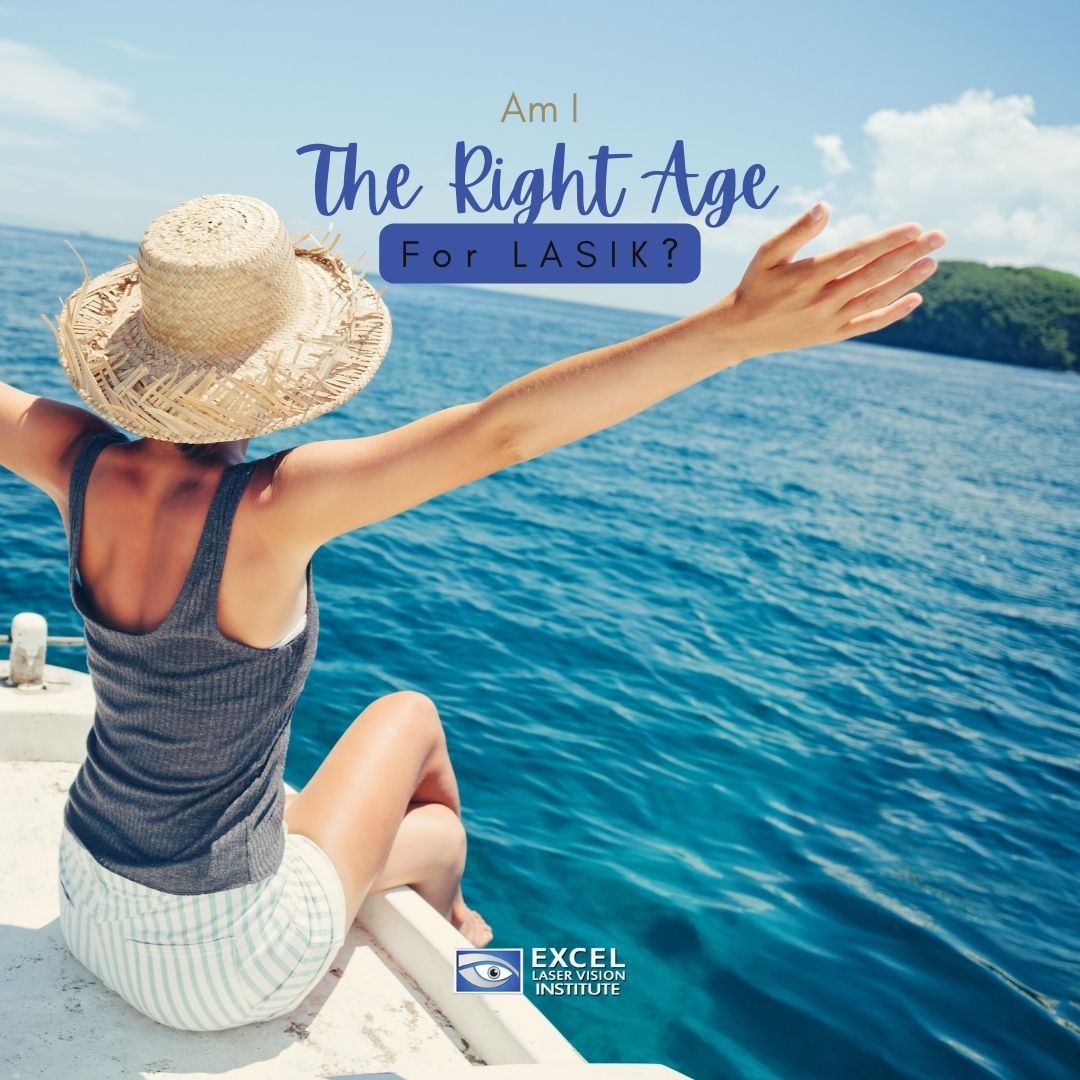
Am I The Right Age for LASIK?
You might have heard about the Goldilocks Effect—it’s a principle derived from the classic fairytale, “Goldilocks and the Three Bears.” Here, a young girl named Goldilocks breaks into a Papa Bear, Mama Bear, and Baby Bear’s house, eats their porridge, sits on their chairs, and sleeps on their bed. In the story, Goldilocks chooses everything the Baby Bear owns because everything was ‘just right.’
The Goldilocks Effect describes how people naturally gravitate towards things that are ‘just right.’ In astronomy, a Goldilocks planet is neither too near the star to be too hot, nor too far to be too cold, allowing living beings to survive. In economics, it refers to three pricing tiers (i.e., high-tier, mid-tier, and low-tier) that cater to all corners of the market. But, did you know that the Goldilocks Effect applies to corrective eye surgery too?
Optimally, you need to be at an age that’s ‘just right’ to get LASIK. That’s because your eye health changes as you age—this affects how well LASIK works.
Now, that doesn’t mean only people of a certain age range can get LASIK! It just means that others need to jump through more hoops to achieve the best results. You must understand how age is a factor in LASIK so you can know what to expect and calculate LASIK eye surgery costs.
What Age is Too Young?
Generally, LASIK isn’t recommended for people younger than 18-years old. Some doctors even recommended their patients wait until they’re 21! That’s because your eyes are still developing at this stage—your near-sightedness, far-sightedness, and astigmatism can still worsen until you reach your 20s. If you undergo LASIK too young, you risk fixing your vision before it’s set, making LASIK less effective.
As you probably already know, LASIK can be pretty expensive. LASIK in Los Angeles, for example, can get up to $4000 per eye! So, unless you’re ready to shell out that kind of money twice, it’s much better to just wait until your vision has stabilized.
What Age is Too Old?
Fortunately, there isn’t a real cut-off age for LASIK. You can even get LASIK well over 60 as long as you meet the necessary qualifications! According to WebMD, a study of 424 LASIK in their 40s to 60s showed that LASIK can still be effective even with the age difference, though they were more likely to get enhancements or repeat procedures.
However, take note that a couple of age-related eye issues will probably make things harder for you. It can affect how well LASIK works the first time you get it, or may even disqualify you from getting LASIK altogether. Here are some of the most common issues:
Presbyopia
Presbyopia is characterized by the gradual hardening of your eyes’ lenses. Because it’s less flexible, it can’t focus as well on close-up objects, making everything look blurry and out of focus. Symptoms of presbyopia include holding objects at an arm’s length to see them clearer, blurred vision, and frequent headaches after using your eyes too close up too long.
Presbyopia is a natural side effect of aging. It starts manifesting as early as your 40s.
Because LASIK only works on the cornea, it can’t do anything to stop presbyopia in your lens. You’ll probably still need glasses if you want to do anything close-up. However, some LASIK doctors address presbyopia by optimizing one eye for close vision and one eye for distant vision. You should discuss presbyopia options with your doctor first to see if they can work for you as this option doesn’t work for everyone.
Cataracts
Cataracts are cloudy areas in your eye that develop when proteins clump together. This prevents your eye from getting clear images, and when left untreated, can cause total blindness. This is commonly seen among older people—according to the World Health Organization, approximately 65.2 million of them around the world are affected by cataracts.
The prevention and treatment of cataracts are totally irrelevant to LASIK. If your vision is affected because of your cataract, LASIK isn’t going to do anything to help it. You’ll need to get your cataracts removed first before you can get LASIK surgery, and a separate surgery is needed to get cataracts fixed if you get them after LASIK.
Glaucoma
Glaucoma is a condition in which your eye’s optic nerve is damaged. It is caused by high pressure in your eye and can lead to total blindness. There is no cure for glaucoma, and you’ll really need to monitor your progress every few years to prevent it from progressing further.
LASIK works on the cornea of your eye, making it thinner. This, then, makes it harder to diagnose glaucoma in its early stages and monitor glaucoma in its moderate and severe stages. If you’re someone with glaucoma or are at high risk of glaucoma, we don’t recommend getting LASIK.
What Age is Just Right?
Many eye health experts agree that age 25 to 40 is the ideal age for LASIK. At this point, your prescription has stabilized and will likely remain consistent for years to come. Depending on your health (e.g., family history of diabetes or cardiovascular disease that are risk factors for cataracts) and eye health (e.g., dry eye syndrome, which disqualifies patients because of decreased tear production), most people at this age are likely to be approved for LASIK.
Conclusion
In short, Goldilocks should probably get LASIK when she’s around 25-40 years old, though she can get it as early as 18. This age range is ‘just right.’ Anything below 18 should not be considered.
Once Goldilocks is past 40, she’ll need to have her doctor screen her eyes for age-related eye conditions that can affect the effectiveness of LASIK. There’s still a huge chance she can get LASIK at this age, but she needs to be aware that the outcome may not be quite the same because of presbyopia, or that she needs to deal with more serious eye issues like cataracts and glaucoma first before thinking about getting LASIK.
Now, before anything else, Goldilocks needs to have a consultation with a professional LASIK surgeon. This article is only a guideline, so she’ll need more expert advice to see if she’s qualified for corrective eye surgery. A LASIK surgeon will take her general health, eye health, and age all into consideration and figure out the best way to achieve the perfect vision for her.
If you’re just like Goldilocks and need an expert opinion from a LASIK surgeon, then Dr. Ferzaad Moosa will be glad to help. He has performed LASIK in Los Angeles and Orange County for the past 23 years and is a certified member of the Board of Ophthalmology. And what’s more—his consultations are free of charge!
Contact his clinic today at (310) 905-8622 or visit his online consultation form here to get started.
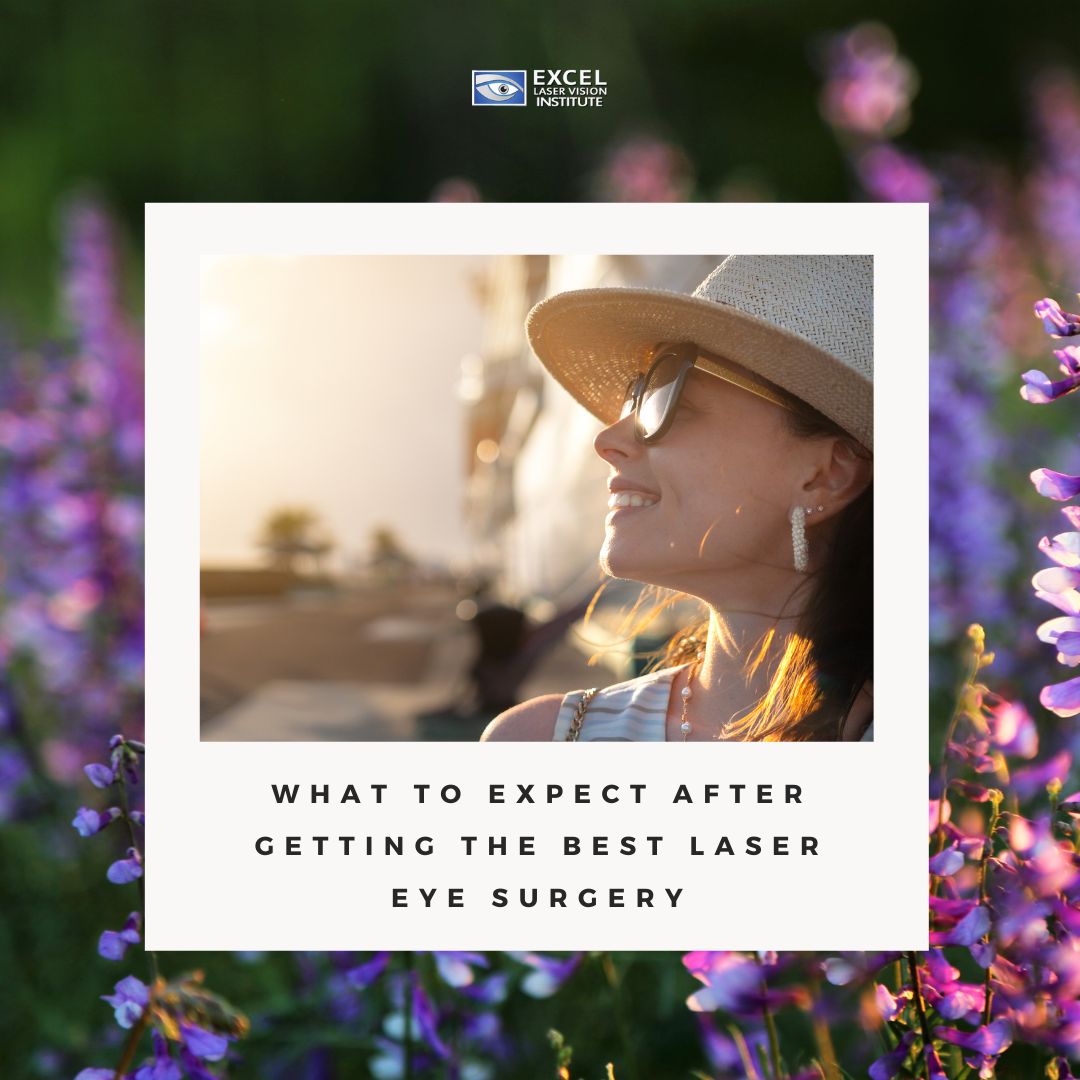
What to Expect After Getting the Best Laser Eye Surgery in Los Angeles
The best LASIK surgeons in Los Angeles agree that proper aftercare is crucial to having a successful surgery. You need to treat your eyes with a lot of care and love as they just went through a lot of work, as I’m sure anyone would need if they had lasers set on them!
Here’s what to expect after getting your life-changing laser eye surgery.
The First Few Hours After Your Surgery
After the surgery is completed, your eye surgeon will let you take a little cat nap to let your eyes recover from the ordeal. Then, when you open your eyes again, you’ll notice that everything around you will be pretty foggy like you’ve just opened your eyes underwater.
This can be a little disconcerting, but you shouldn’t worry about it. It’s completely normal! Your vision will eventually clear up the more your eyes heal, though some of our past patients had reported being very impressed by what they could already see the second they opened their eyes.
However, since your vision is still pretty affected, you still won’t be allowed to move around on your own. All LASIK surgeons will require a companion with you to either drive you to and from the appointment or guide you around public transportation. This is for your safety and the safety of others.
Your surgeon will also require you to wear eye shields. These need to be worn the whole day after your surgery and often the next few days as they will protect your eyes from damage. Eye shields prevent you from accidentally touching or rubbing your eyes, especially when you’re asleep and can’t control your movements. It also protects you from bacteria moving from your bedsheets or pillows to your eye.
And speaking of sleep, you’ll be doing a lot of it once you get home from your surgery. Sleep is the #1 way to let the eyes heal, so have a minimum of four hours of shuteye for a faster recovery process.
Once you wake up for the second time, the effects of the anesthesia will have worn off. You might experience discomfort and even pain—some of our patients describe it as having something sharp stuck in your eye, or a burning sensation that won’t go away.
Use your prescribed medications to help soothe your eyes. They should help you manage your pain by preventing infection and reducing inflammation. They also stop your eyes from itching by keeping them well-lubricated.
Here’s a neat trick: if your surgeon allows it, you should refrigerate your eye drops! They feel so good in the eye and can wake you up really quick.
The First Few Days After Your Surgery
As we mentioned earlier, you’ll need to wear your eye shields for the next few days to protect your corneal flap. While they’re technically only required at night, we still highly recommend wearing them whenever you can, especially if you’re prone to reaching for your eyes.
While you’re outside, you can start switching to sunglasses—they’ll protect your delicate eyes from the harsh UV rays and is something everybody should do even without getting LASIK. This is also super important as your eyes will still be pretty sensitive to light post-surgery.
Now, when it comes to taking a shower, you need some extra protection. Having unfiltered water and chemical-laden shampoos in your eye is a first-class ticket for harmful bacteria and unwanted pain. That’s why we highly recommend wearing swimming goggles or face shields while you’re showering, as these will keep your eyes nice and dry while you wash off. Alternatively, you could also keep your eyes firmly shut while you wash your hair, and then quickly wipe off the water with a towel after you’re done.
Not showering at all is also an option, albeit a slightly smelly one.
Lastly, you’ll need to visit your doctor for a follow-up appointment a day or two after your surgery. They’ll need to monitor your early recovery to see if it’s going as planned. Here, you can tell them what kind of side effects you’re experiencing—if you have dry eyes, puffy eyelids, excess tears, or any other condition, your doctor can prescribe something to help.
The First Few Weeks After Your Surgery
While the recovery process for LASIK Los Angeles is pretty quick, there are some things you still need to limit.
For one, you need to spend less time in front of your computer or reading. These activities contribute to dry eyes. If you must, just make sure to use your eye drops frequently to keep them lubricated.
Secondly, avoid wearing makeup products altogether. Eyeshadows, eyeliners, mascara, and other products have bacteria in them that can get transferred over to your eyes. This is why you should avoid large bodies of water like pools, lakes, and oceans too—they’re cesspools of bacterial contamination!
Thirdly, avoid being in places that have a lot of dust, dirt, and smoke. The tiny particles can enter your eye and can exacerbate the itchiness. Trust us, when you’ve got a healing corneal flap, the last thing you want to do is get a dust particle lodged in there! Avoid gardening and heading to places with lots of air pollution.
About a month after your surgery, you’ll be cleared for vigorous activities like aerobic exercises and weightlifting. With that said, you’ll still need to wear polycarbonate sports glasses to prevent trauma, even if you’re not required to wear eye shields to sleep anymore.
Your vision will fluctuate during this period as your eye heals even more. This is normal. Contact your surgeon only if your vision gets worse or if you start feeling pain for no reason.
The First Few Months After Your Surgery
It’ll take up to six months for your vision to stabilize, and it’s important to have regular check-ups with your eye surgeon. As we mentioned earlier, they can track your healing process, prescribe medications, and identify any issues before they get any worse. Aim to visit them at least once every month.
As your vision stabilizes, you might have problems with halos, starbursts, glares, and others. They resolve themselves for the most part, but in some extremely rare cases, they might not be fixed. Your vision could also not be 100% even after proper healing. In that case, you can consult with your doctor and see if this is something that can be fixed with another surgery, free of charge.
LASIK in the Long Run
Now, keep in mind that LASIK isn’t a magic surgery that’ll make you immune to all future eye problems. LASIK only fixes irregularities in your cornea—it doesn’t prevent irregularities that eventually develop in other parts of your area. As you get older, you can become nearsighted or farsighted again due to conditions like presbyopia and hyperopia. You can also develop eye problems like glaucoma and cataracts.
However, these conditions don’t usually show up until you’re well in your 40s. You’ll have lots of time to enjoy the benefits of your LASIK, free of pesky eyeglasses and contacts. Savor it while you can!
10 Realistic Expectations Regarding LASIK
Realistic expectations are crucial when considering Los Angeles LASIK (Laser-Assisted In Situ Keratomileusis) surgery, as it’s a medical procedure that can significantly improve vision but may not guarantee perfect results for everyone. Here are some realistic expectations you should have about LASIK:
Improved Vision
LASIK can effectively correct refractive errors such as nearsightedness (myopia), farsightedness (hyperopia), and astigmatism. The primary goal of LASIK is to improve vision, often reducing or eliminating the need for glasses or contact lenses for many everyday activities.
Reduced Dependency on Corrective Eyewear
While LASIK can significantly reduce dependency on glasses or contacts, it may not eliminate the need for them in all situations. Some individuals may still require reading glasses for close-up tasks due to presbyopia, a natural aging change in the eye that typically occurs after age 40.
Potential for Complications
Like any surgical procedure, LASIK carries risks and potential complications, although rare. These may include dry eyes, glare, halos, fluctuations in vision, undercorrections, overcorrections, and, in rare cases, more severe complications such as infection or corneal ectasia.
Realistic Vision Expectations
While LASIK can provide excellent visual outcomes for many individuals, it’s essential to understand that achieving “perfect” vision is not guaranteed. Factors such as the severity of refractive error, corneal thickness, pupil size, and individual healing responses can influence the final visual outcome.
Time for Healing and Stabilization
It takes time for the eyes to heal and vision to stabilize after LASIK surgery. While some individuals may experience improved vision immediately or within a few days, others may require several weeks or months for optimal results. Following post-operative instructions and attending follow-up appointments to monitor progress and address concerns is essential.
Possible Need for Enhancement
In some cases, additional procedures or enhancements may be necessary to achieve the desired visual outcome after LASIK surgery. This may occur if there is residual refractive error, undercorrection, overcorrection, or regression of the initial correction over time. Your surgeon can discuss the possibility of enhancements based on your circumstances.
Long-Term Results and Stability
While LASIK can provide long-lasting visual improvement for many individuals, the stability of the results can vary. Factors such as age, hormonal changes, eye health, and lifestyle factors can influence the long-term stability of the correction. Some individuals may experience changes in vision over time and may require additional vision correction.
Pre-Existing Eye Conditions
LASIK may not be suitable for individuals with certain pre-existing eye conditions or factors that increase the risk of complications. These may include cataracts, glaucoma, severe dry eye syndrome, corneal abnormalities, or autoimmune diseases affecting the eyes. It’s essential to undergo a comprehensive eye examination and evaluation to determine suitability for LASIK surgery.
Continued Eye Care
Even after successful LASIK surgery, it’s essential to maintain regular eye exams and follow-up care with an eye care professional. Routine eye exams can help monitor eye health, detect any vision changes, and address any potential issues promptly to ensure long-term ocular health and visual stability.
Satisfaction with Improvement
While LASIK can significantly improve vision and quality of life for many individuals, satisfaction can vary from person to person. Having realistic expectations and understanding that LASIK is not a guarantee of perfection but a treatment option that can substantially benefit many individuals is essential.
Conclusion
Having realistic expectations about LASIK surgery is essential for making an informed decision and achieving satisfactory outcomes. While LASIK can significantly improve many individuals’ vision and quality of life, it’s essential to understand the potential risks, limitations, and variability in results. By discussing your goals, concerns, and expectations with a qualified eye care professional, you can decide whether LASIK is the right choice for you.
If you’re interested in learning more about LASIK, why not contact the office of Dr. Ferzaad Moosa? He is a licensed, board-certified surgeon that has been offering high-quality LASIK in Los Angeles for the past 23 years. He’ll help you achieve the perfect vision with outstanding talent, revolutionary technology, and state-of-the-art care facilities.
Visit our website here and fill out our free evaluation form. You could also contact us at (310) 905-8622 to set an appointment.
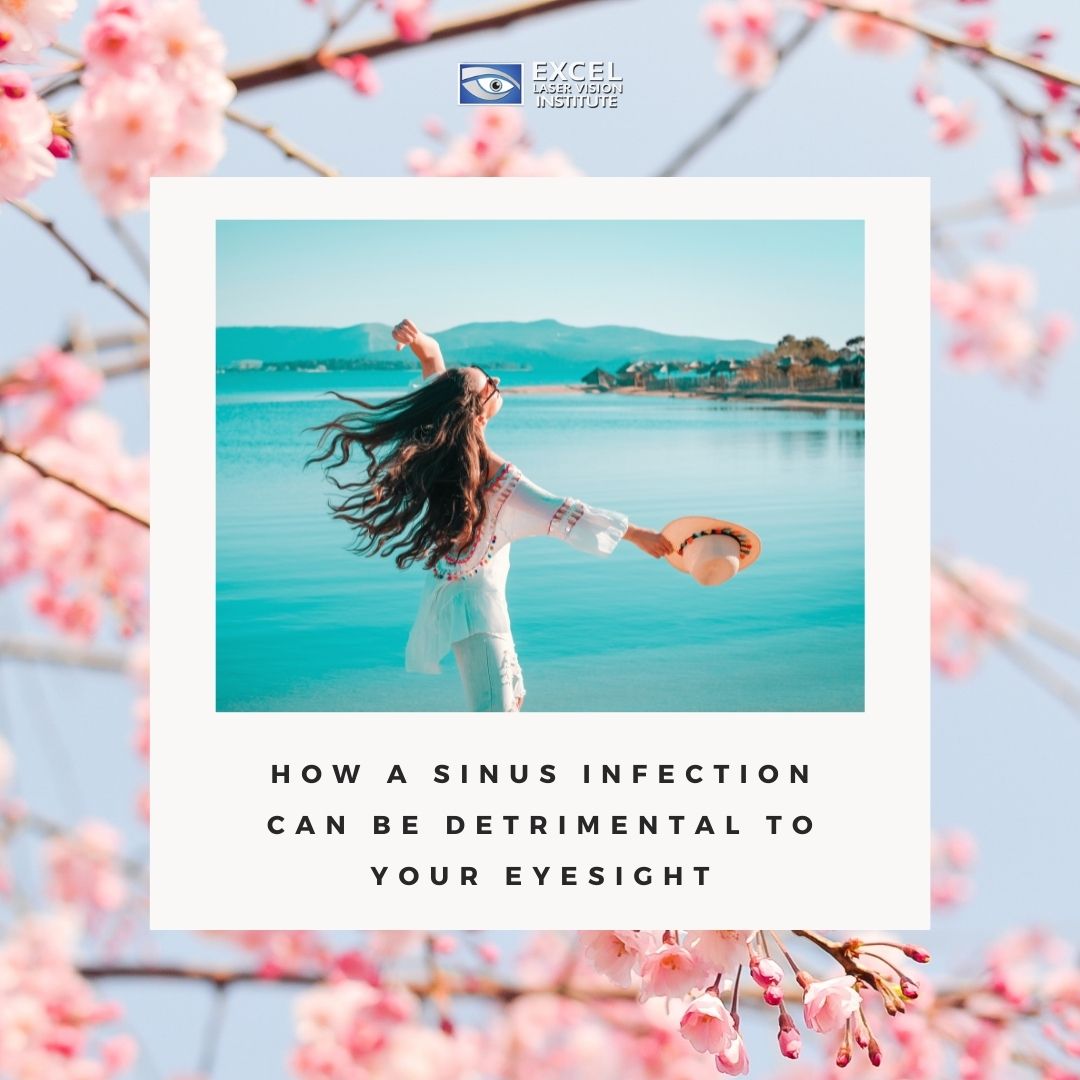
How a Sinus Infection Can Be Detrimental to Your Eyesight
When you get a sinus infection referred to by doctors as sinusitis, naturally, you are most likely to be concerned with how your nose and your head feel. It is normally caused by seasonal allergies, with over 3 million cases each year in the United States. It normally means no need for panic; however, this relatively brief illness can also negatively impact your eyesight, even if you do not experience any pain. Our Los Angeles LASIK team wants you to understand how you can better take care of your eyes if you are more prone to bouts of infections such as these.
There are 3 types of sinus infections that we should be familiar with:
Acute sinus: The symptoms are present for 4 or fewer weeks.
Subacute sinusitis: The symptoms last between 4 to 8 weeks.
Chronic sinus: The swelling of the sinus has been occurring for more than 3 months. Medical attention is necessary.
The most predominant symptoms of sinus infection include:
Basic congestion
Cough
Facial pain or pressure
Fatigue
Headache
Heavy eyelids
Mucus dripping down the throat
Pressure alongside the temples
Runny nose
Sore throat
Stuffy nose
Unpleasant breath
Now, while sinus infections rarely stay for the long haul, the big and quite unfortunate catch is that a more serious case of the illness can actually bring about permanent damage to your eyes. Since your sinus cavities can swell as a result of sinus infections, which are located in the bones around your nasal passages around your eyes, naturally, it can cause them to become irritated. This potential permanent damage to your eye socket can result in either blurred vision or even blindness, and unfortunately, Los Angeles LASIK eye surgery is not equipped to treat these conditions.
How to Treat a Sinus Infection
Depending on the severity of your symptoms, a variety of treatments may be necessary. You may be able to take over-the-counter antibiotics, saline nasal spray, or allergy medication if you are experiencing acute sinus. If you find that these methods aren’t working even after a few weeks, then you might be experiencing a more serious form of the illness and should consult a doctor before it’s too late. Be clear with your doctor if you are experiencing any pain or discomfort in any area of your body so that the problem can be properly assessed and diagnosed.
How to Prevent Your Chances of Getting Sinusitis
Drink an adequate amount of water each day
Clear excess mucus from your passages by running water through them once a day
Inhale steam
Avoid dry environments when possible
Avoid contact with others who are ill
Once you are healthy again, if you are interested in undergoing LASIK in Los Angeles, go ahead and reach out to our Encino office at (310) 905-8622. Our Harvard-educated and trained physician, Dr. Moosa, as well as his committed team, can make your dream of a clear vision a reality. Schedule your free consultation appointment with us to discuss the specifics of your procedure, including LASIK eye surgery cost as well as the outcomes. Our Los Angeles LASIK center has proudly accumulated more than tens of thousands of satisfied patients accumulated over the last 23 years, and you are bound to become one of them!


